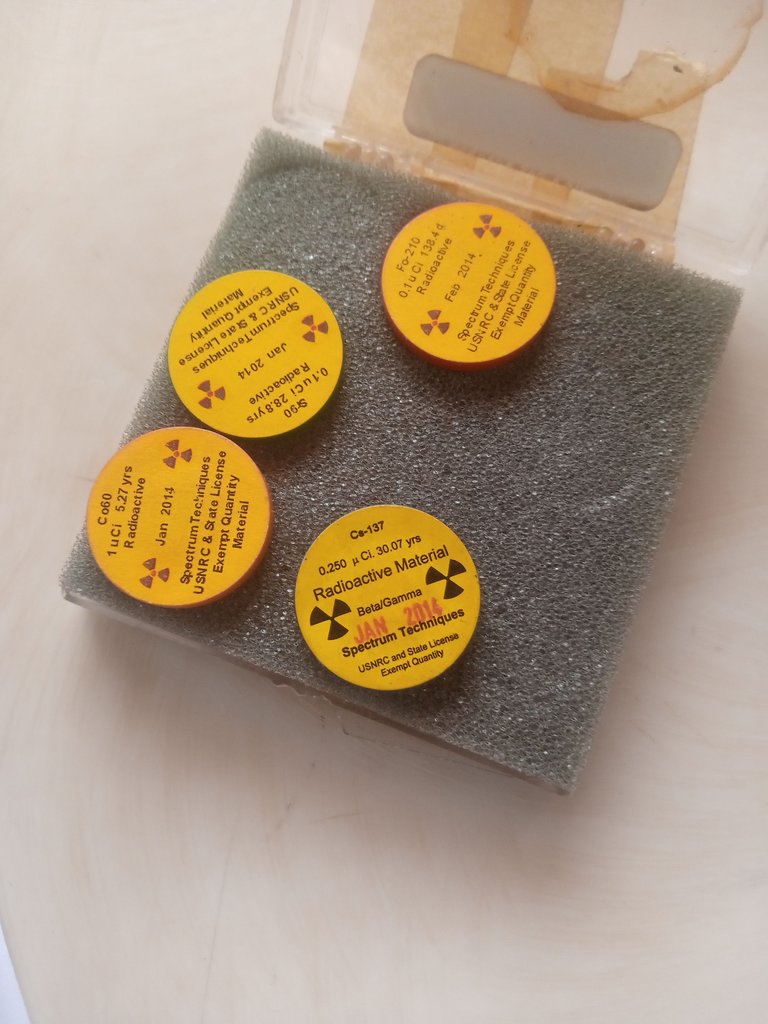Laboratory work : radiation detection using Geiger Muller tubes
HELLO HIVE
Good day 😊 hive five years ago I began my journey in the field of physics after the completion of my high school I chose physics as a field that I wanted to major in and without any doubt it has been a beautiful five-year journey with so many ups and downs. In the final year of my studies at the University of Ilorin Nigeria, physics has always been about the study of matter, energy, space, and time seeking to understand the fundamental principle that governs the universe exploring things from the smallest to the largest particles in the galaxies and one important breakthrough in the field has been the aspect of nuclear and quantum physics, this field has changed our perspective on so many things.

Nuclear physics has affected us positively in so many aspects like medical applications(diagnostic imaging like X-ray and CT scans also in radiation therapy for cancer ), power generation, and food safety techniques.
Every day scientists work hard to make different groundbreaking discoveries in nuclear physics and this is how famous scientists in history started from small laboratory activities that we students engage in, one such experiment is radiation detection using Geiger Muller tubes this experiment is relatively easy with the right explanation the experiment can be costly for an individual to carry at home in their free time because of the cost of the equipment and radiation material.

The radiation material in our case isn't very harmful so there won't be noticeable effects on students which makes it easy, the main equipment is the Geiger Muller tube, high voltage power supply, readout display or counter, audio detector, enclosure or housing, and calibration source.
Radioactive Source (e.g. Cs-137, Sr-90, or Co-60) – One of the orange, blue, or green sources.
PROCEDURE
1, Connect the transformer/ power supply to any normal electricity outlet and the back of the ST-360 box.
2, Next, remove the red or black end cap from the GM tube CAREFULLY. (Do not touch the thin window!)
3, Place the GM tube into the top of the shelf stand with the window down and BNC connector up.
4, attach the BNC cable to the GM tube and the GM input on the ST-360.
5, Turn the power switch on the back of the ST-360 to the ON position.
6, Place the given Beta source into the third slot from the top of the shelf stand.
7, Set the count button to count by increasing the voltage until the counter starts to count.
8, Reset the counter (by pressing the rest button) and set the time for 1 minute (60 sec) by using the DISPLAY SELECT button to move select time and the UP and DOWN buttons to increase or decrease the time.
9, increase the high voltage by 40V interval (by using the DISPLAY SELECT button to move select time and the UP and DOWN buttons to increase or decrease), and Press the count button to count.
Then take the count, time in seconds, and then the voltage.
Counts
Time(s)
Voltage
We will get A PLATEAU GRAPH FOR A GEIGER-MULLER COUNTER when we plot a graph of counts against the voltage.







Thanks for the update. Welcome to STEMSocial!
Thank you 😊
Thanks for your contribution to the STEMsocial community. Feel free to join us on discord to get to know the rest of us!
Please consider delegating to the @stemsocial account (85% of the curation rewards are returned).
You may also include @stemsocial as a beneficiary of the rewards of this post to get a stronger support.
Thank you 😊
Impressive work. Even though I'm not really fond of that physics but I love on watching and doing that kind of experiment. Thank you for sharing.